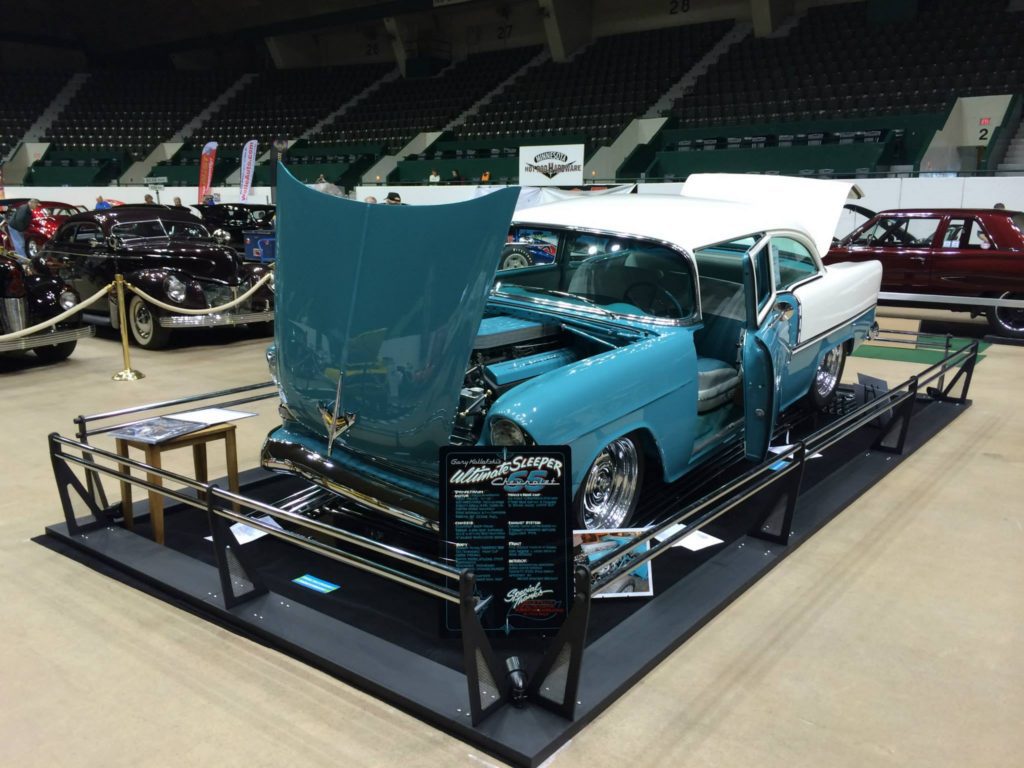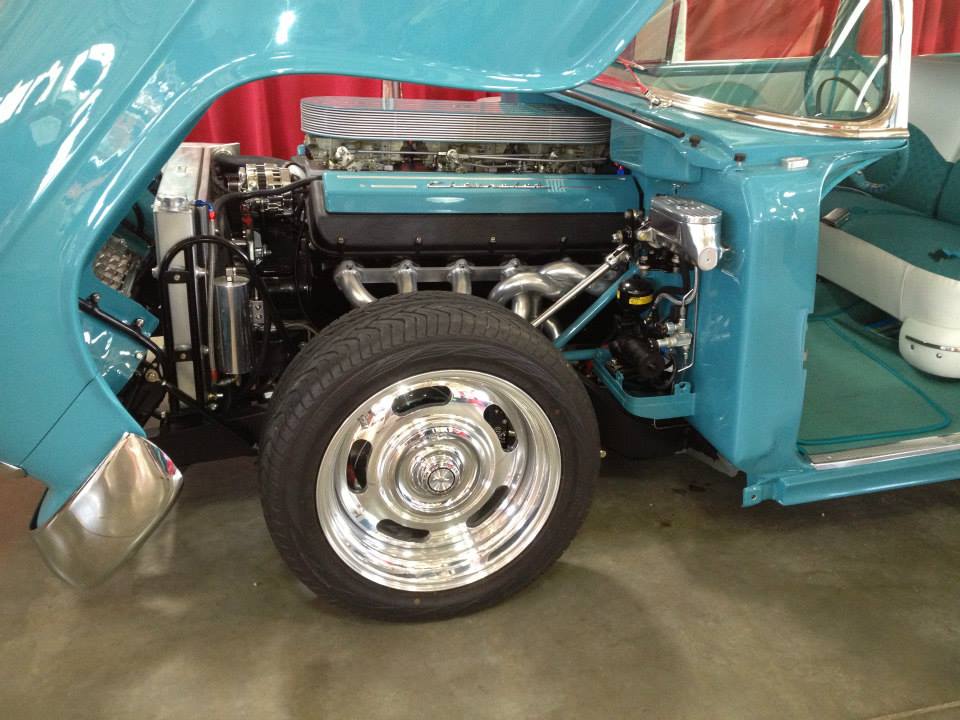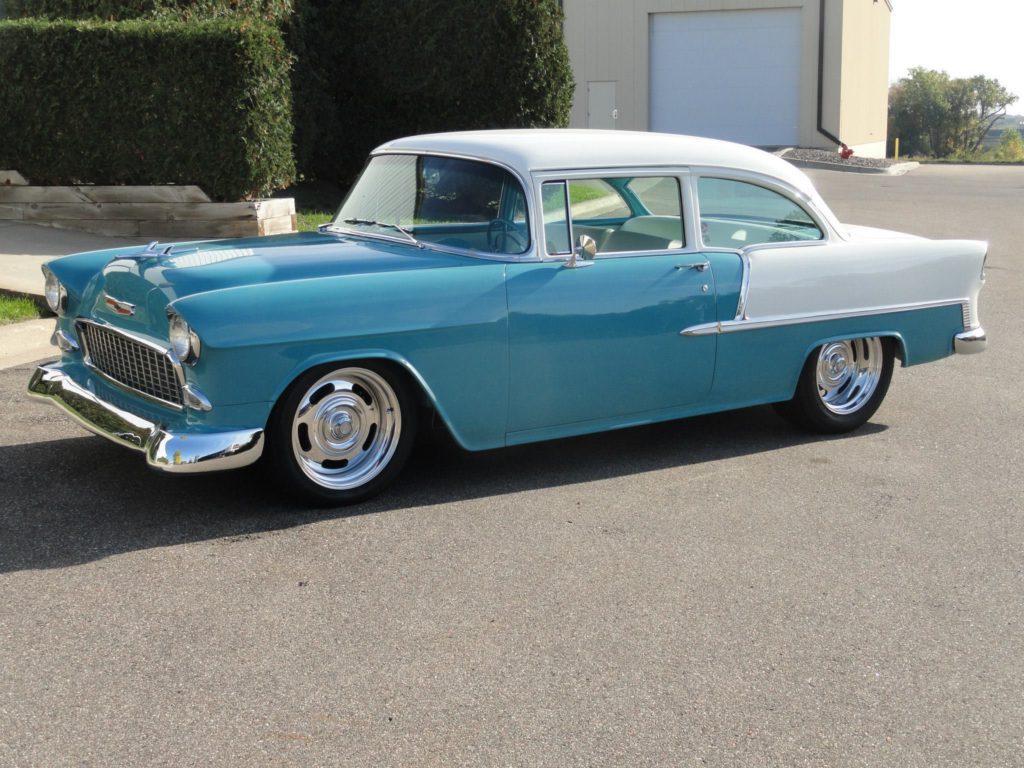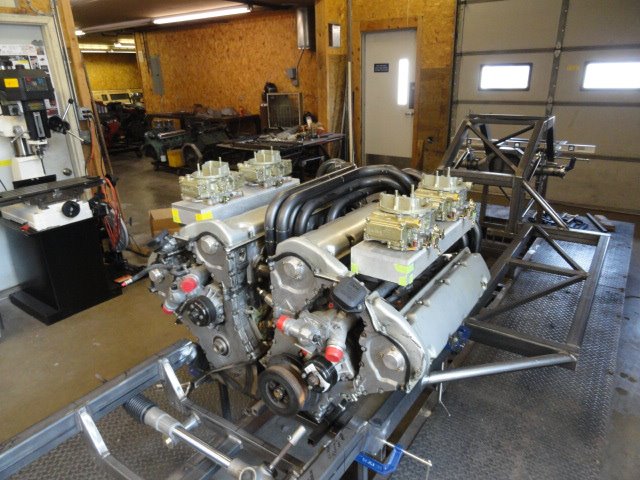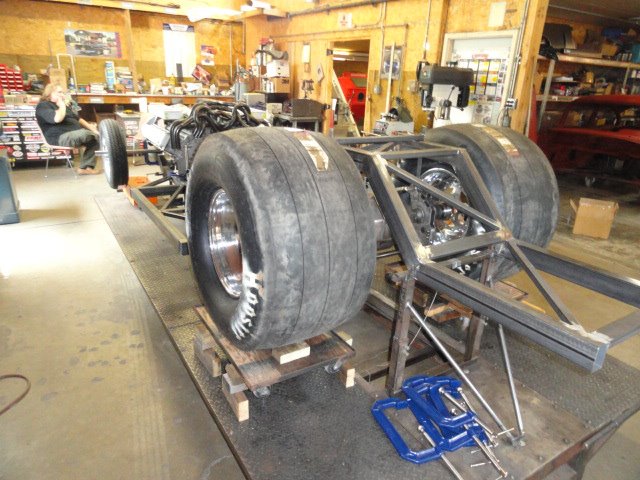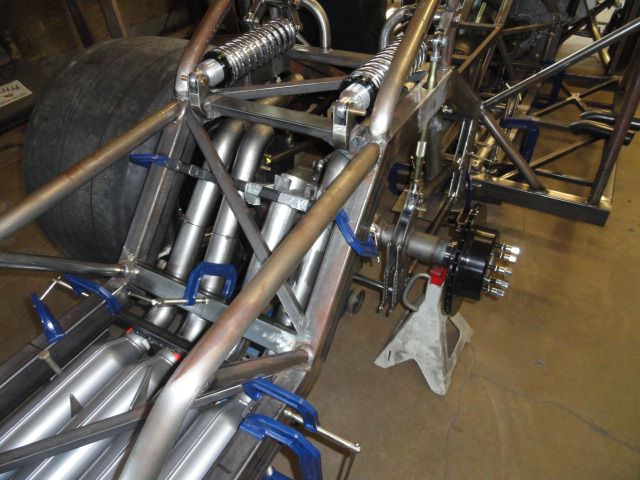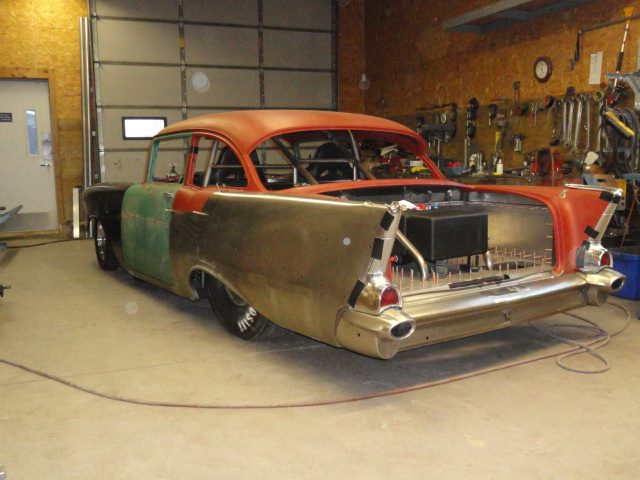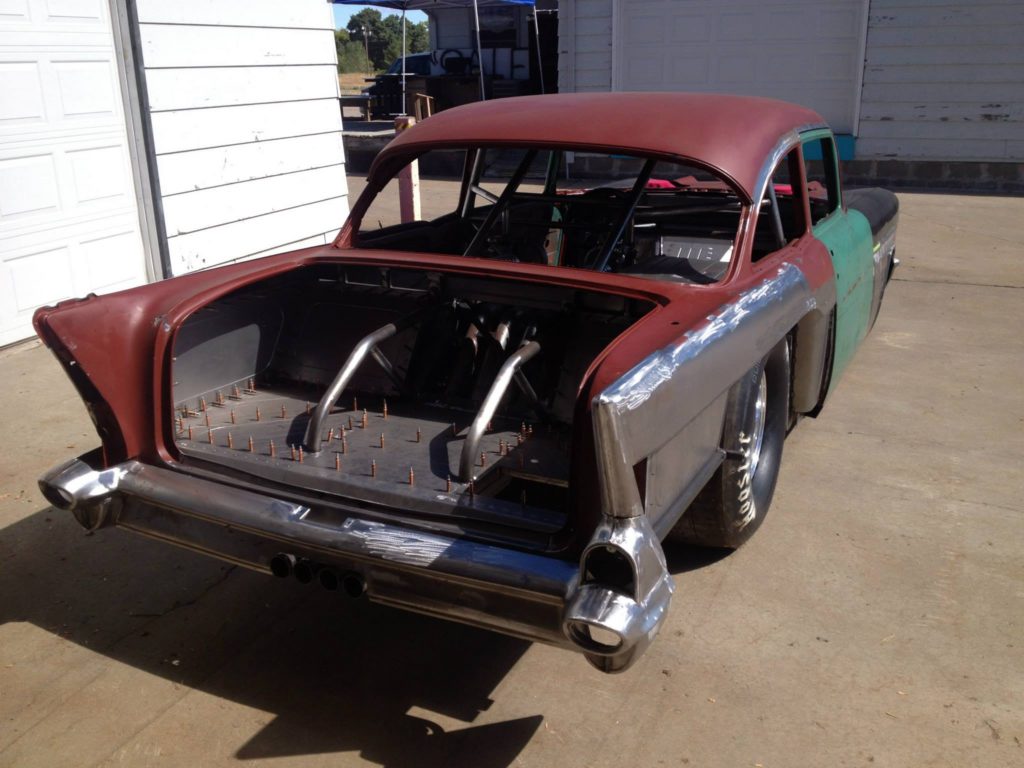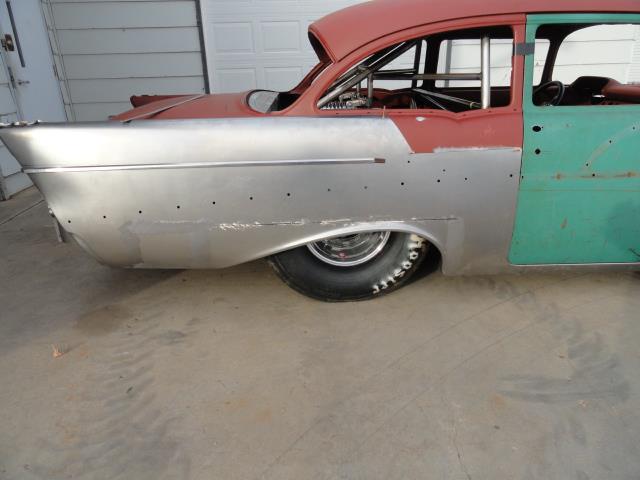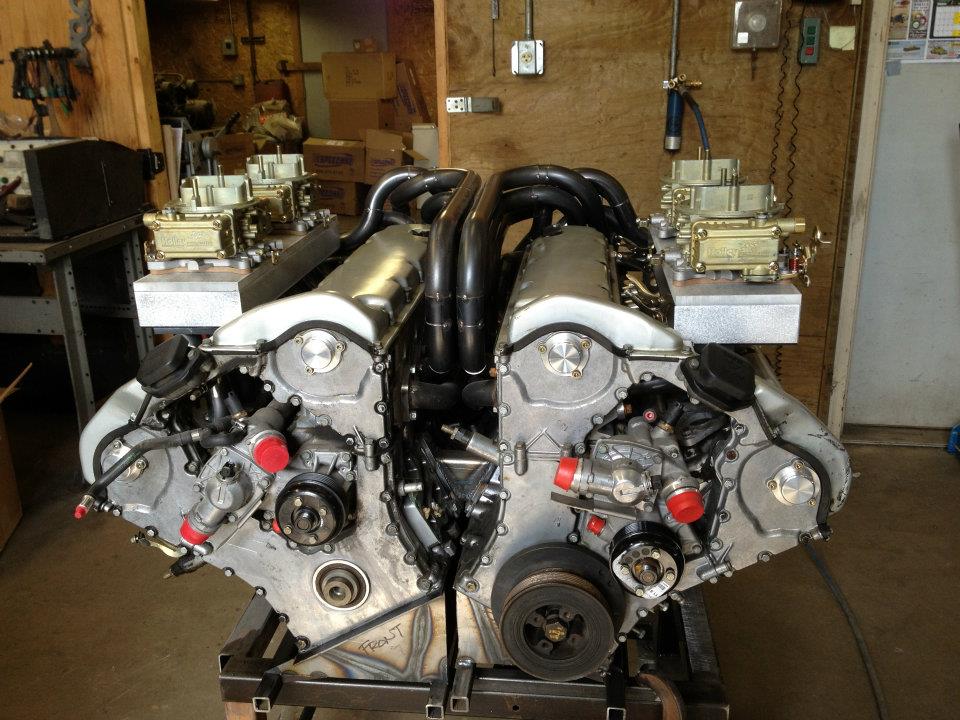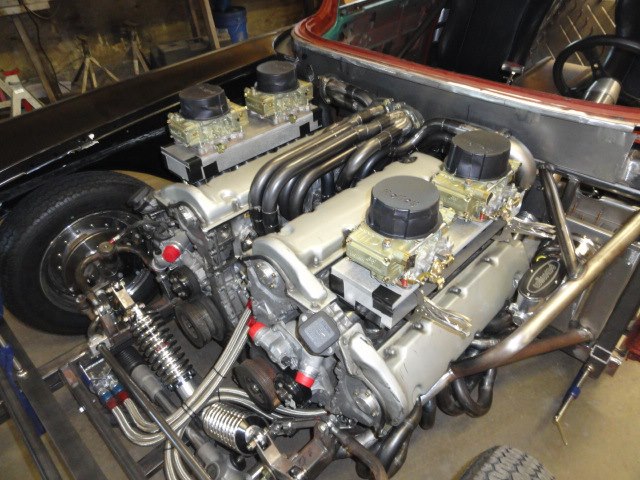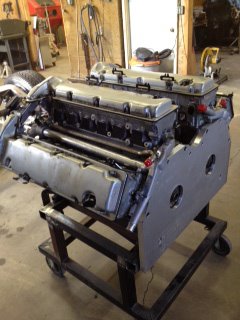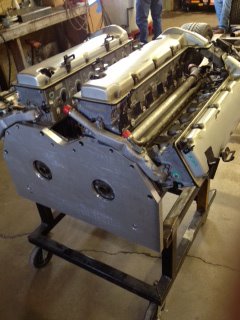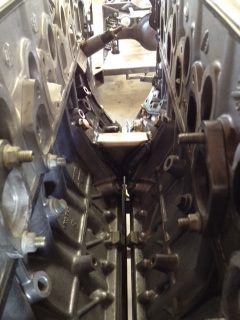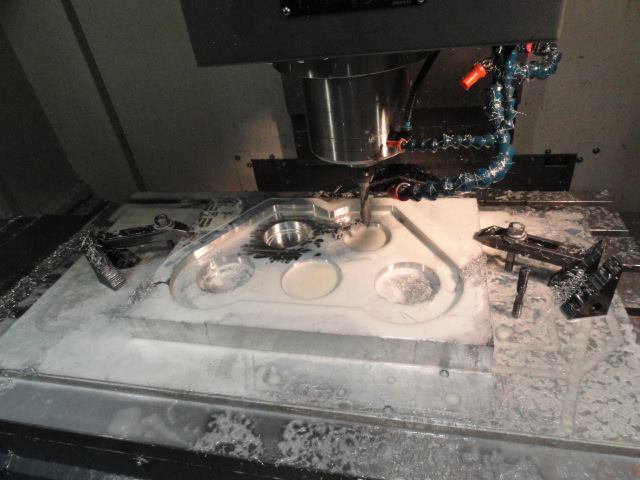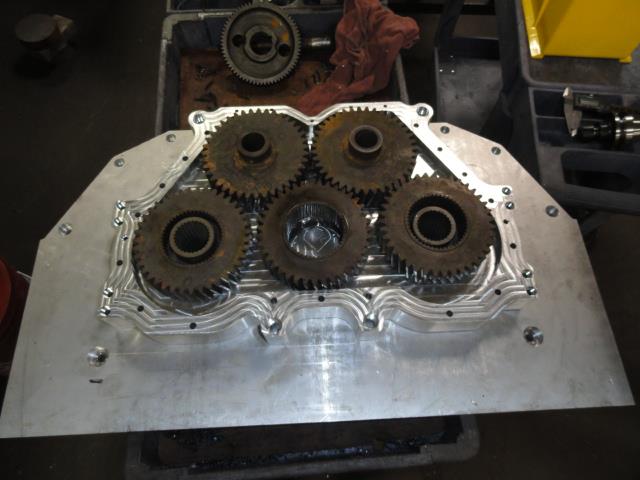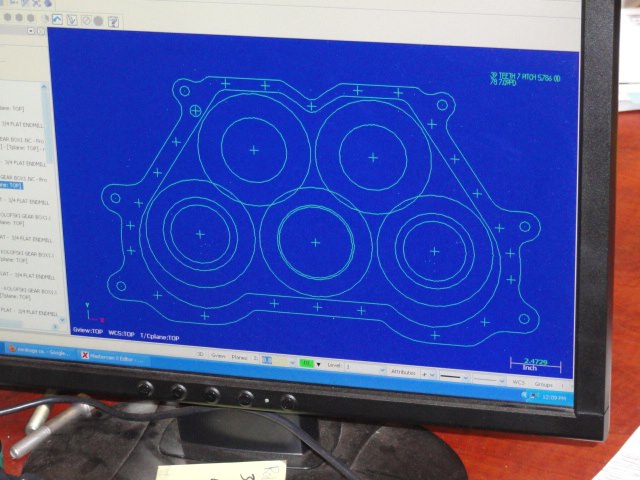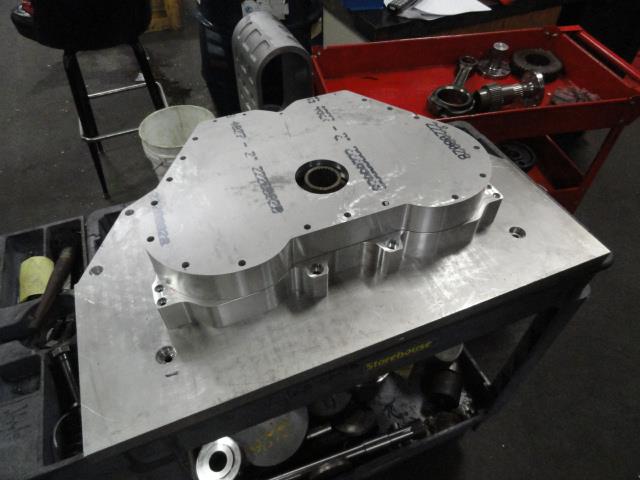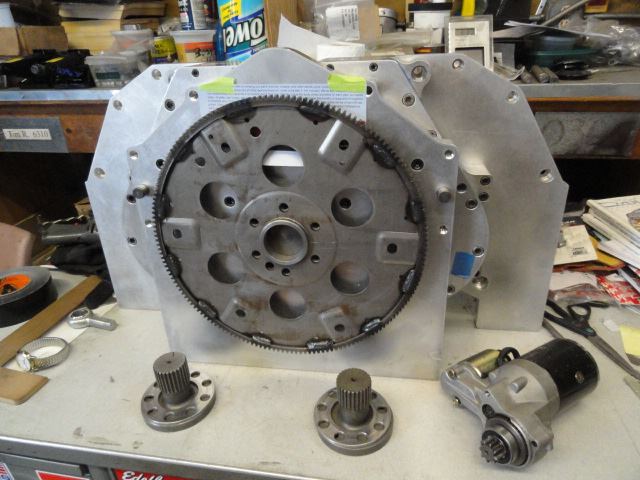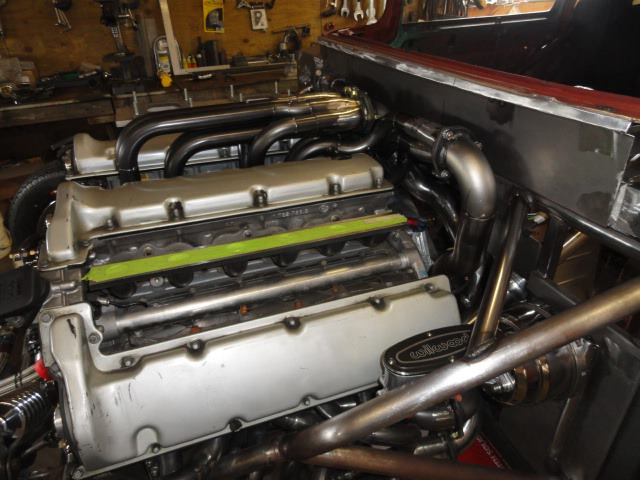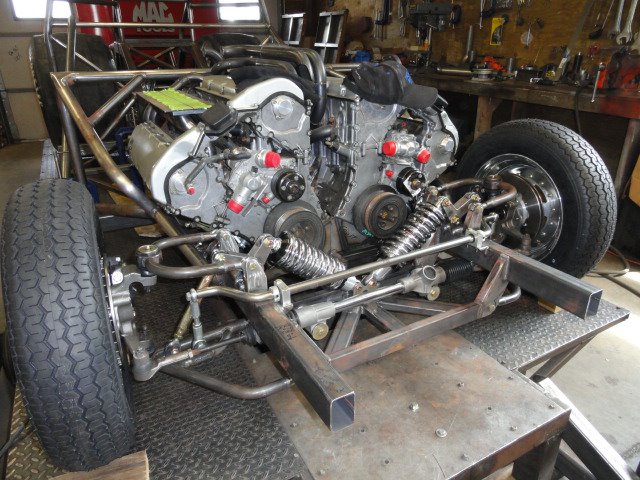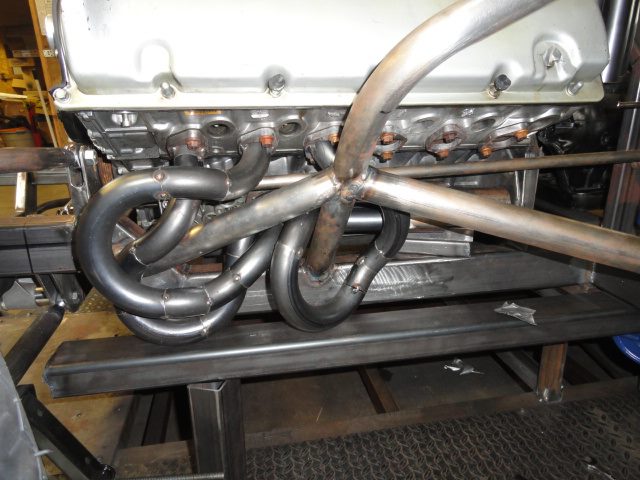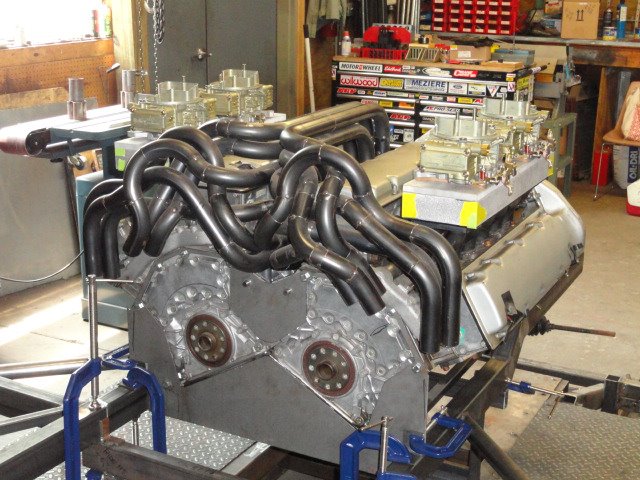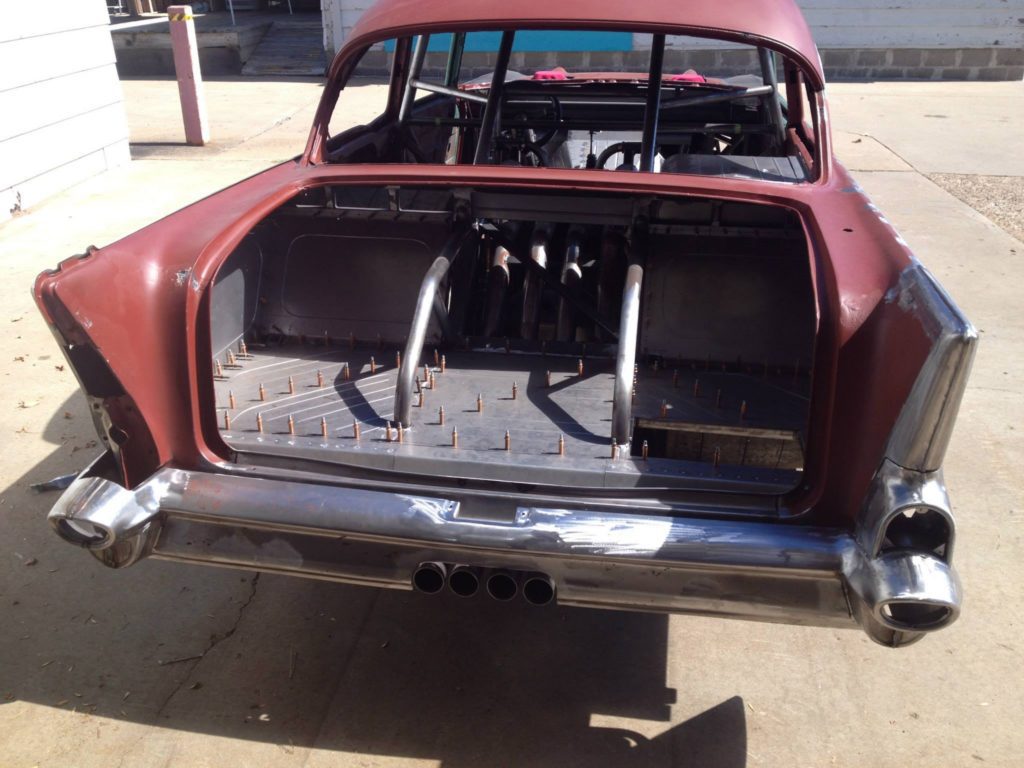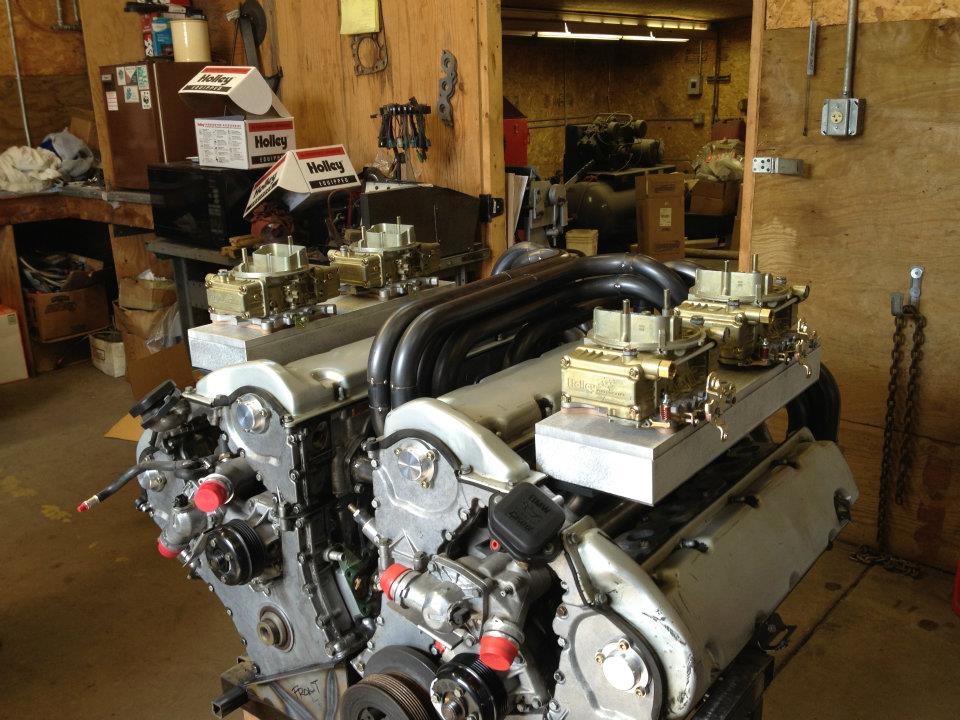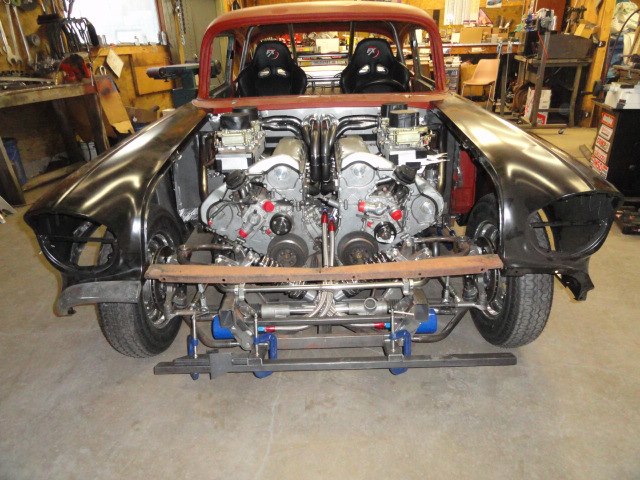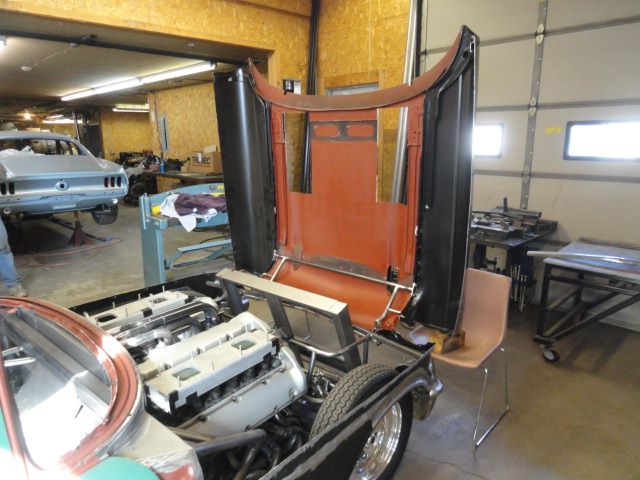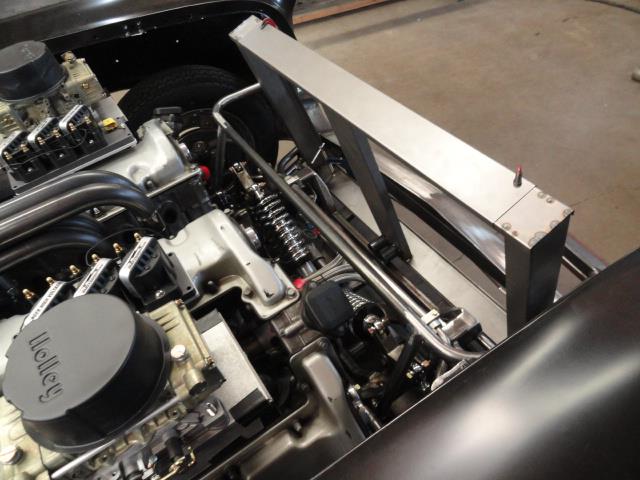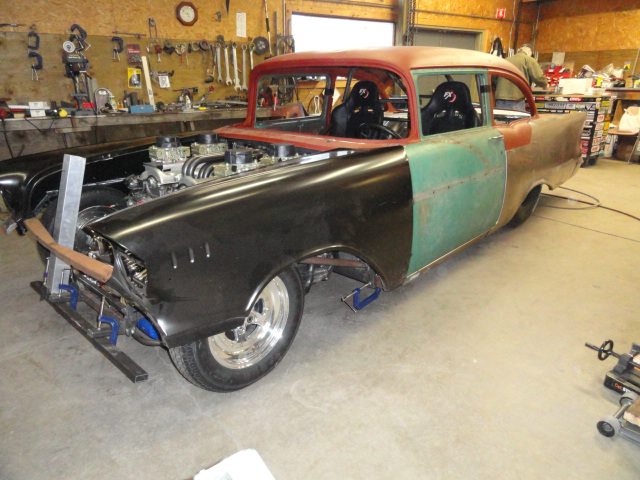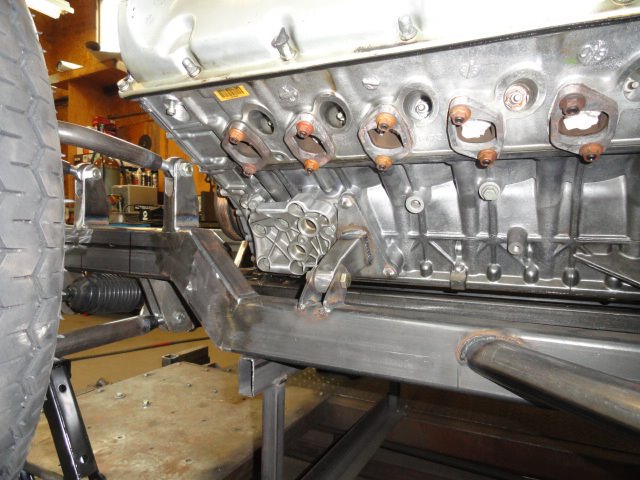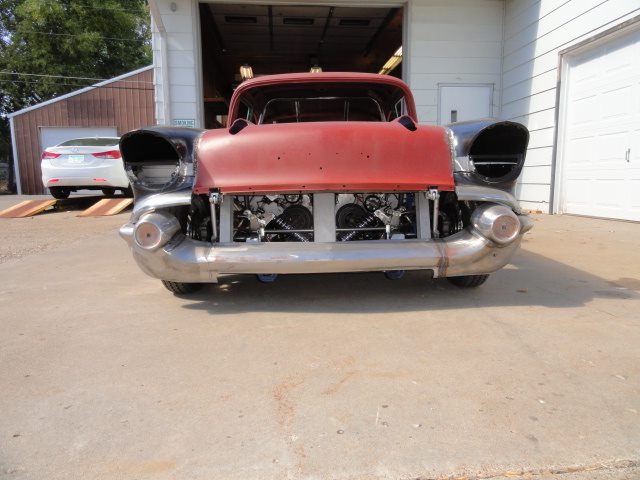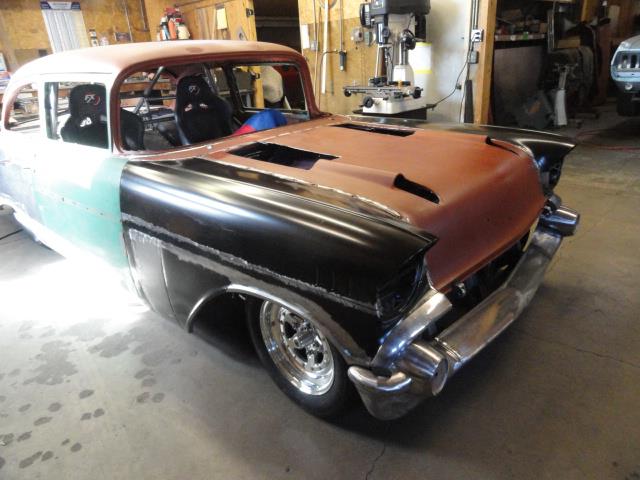Story by: Dale Pelvit and Gary Kollofski
Edited by: Mike Oswald
Good day BMW aficionados, my name is Dale Pelvit and I would like to tell you a story. The story is about twin BMW V12 (M73B54) engines being used to power a hot rod. Before we get to the meat of the story, I’ll ask you to indulge me for a bit of background.
The main characters in this story are my old friend Gary Kollofski and myself. Gary is a retired high school mathematics teacher and I am a retired automotive machinist. We’ve known each other for over 40 years and share a passion for virtually all things automotive . . . and Hot Rods in particular.
Gary has been involved in motorsports for over 50 years. In the mid 1970s he had a ’55 Chevy built that was instrumental in the establishment of a new genre of Hot Rod – that being “Pro Street”. This car was powered by a 440 cubic inch supercharged big block Chevy. This enabled it to run low 10 second ET’s at the drag strip while retaining the streetability and reliability necessary to be a practical driver on the street. The car won a bunch of awards at car shows and was featured in Hot Rod Magazine in 1977.
In the 1980’s Gary’s fancy turned to powerboats (with an emphasis on the “power” aspect of the equation). That quest for power culminated in a 38 foot cigarette boat that was capable of 100 miles per hour. The thrust required to attain that speed was provided by a pair of supercharged and intercooled 572 big block Chevy engines. I assembled those engines for Gary and they each produced over 1100 horse power on the dyno.
Gary also traded in marine parts and at one point, acquired a pair of 730 cubic inch Italian BPM V12 marine engines. One of those behemoths found an unlikely home in another ’55 Chevy. Like his first ’55, this car won many awards at car shows and was featured in a major magazine (the May 2014 issue of Car Craft).
While involved with the boats, Gary also began a love affair with BMWs, particularly those with V12 power. He’s owned both 750 and 850 BMWs and admired the smooth and powerful engines under those hoods.
If you are beginning to detect a pattern here, you are on the right track. Yes, Gary likes lots of horse power and . . . V12 engines. He’s also been exposed to the multiple engine combos that are common to very fast boats.
Never one to rest on his laurels, and after completion of the BPM powered ’55 Chevy, Gary was determined to build a car to top it. Here’s where the BMW engines come into the picture. You may note that I said “engines” – plural . . . and car – singular. This sets the stage for his next automotive adventure: Twin M73B54 V12s mated together to form a monster W24!
The car is a ’57 Chevy 2 Door Sedan and was someone else’s aborted project car. The previous owner had purchased an Alston Chassis Kit. They cut the firewall and floor out of the car and decided that it was more of a project than anticipated. The car was put up for sale and Gary scooped it up. I was again selected to do the build.
Above: We’d planned a full tube custom chassis for the new car, so the missing floor and firewall wasn’t a drawback. It actually saved the time it would have taken to remove them ourselves.
The car had a straight roof, the A and B pillars were sound, and the trunk and hood were usable. We had what was left of the body sandblasted and primed. Gary then bought new front fenders, rocker panels, rear quarters, and a pair of nice original doors were also located.
The BMW V12 ’57 would need to be kept virtually stock in regard to its outward appearance (as per Gary’s concept for that build). Going into the ’57 project, I was allowed considerable latitude in the design.
We chose to build a Pro Street style car along the general concept of his original 1970’s ’55 – but updated to suit the new century. Big tires on the back, small tires on the front and an overabundant power plant is the basic premise of such a build.
We kicked around various ideas for power in the new car and came to the conclusion that anything less than 12 cylinders would be insufficient. We’d already used the big BPM in the ’55 and Gary wanted something different for the next car. Being a fan of BMW engines, he suggested the 5.4 liter M73 V12. I agreed that this would be a fine power plant but with less than half the displacement of the BPM, the necessary “outrageous” factor wasn’t there. Half in jest, I suggested we use two of them. Gary asked if that was possible and I said “yes”. Thus was born the concept for the engine package we would come to call the “W24”.
Gary actually had an engine out of a BMW 750 that had suffered an engine fire. It was a bit toasted, but suitable for determining dimensions. . . that’s dimensions – not dementia. The dementia had already been established by our previous behavior. The 60 degree V and SOHC design provided a narrow package. The relatively small displacement (relative to the 12 liter BPM) kept the length manageable.
Now that I’d opened my big mouth and told Gary that putting two engines in the car was possible, I now had to figure out how to do it. There are at least three potential layouts for a twin engine package: There’s two in a row, one in front and one in back, and side by side. Side-by-side is generally how twin engine boats are configured and that was the only practical layout for Gary’s ’57.
We determined that canting each engine 30 degrees away from each other (and then sliding them together as close as possible) would bring the crankshafts 12 inches apart and provide 5 inches of clearance between the cylinder heads. That allowed for a compact connecting gearbox and enough room between the heads for the center twelve header tubes (as well as spark plug access).
Once we had a workable plan, Gary located two low mileage takeout engines and the fun began in earnest. A fixture was built to temporarily hold the engines in place. We called on Bob Bendsten of Bendsten’s Transmission / Speed Gems in Ham Lake Minnesota. Bob took measurements and machined a 1 inch thick aluminum plate to tie them together at the rear. I built a connector off the stock motor mount pads on the facing sides of the engines to hold them together at the mid-point. These two connecting rods will be sufficient to hold the engines in place.
Custom oil pans are being built to conform to the 30 degree cant of the engine blocks. The oil filters have been remotely mounted among the front suspension in a place where they’re easily accessible and won’t drip on anything when changed.
Carl Wepplo of Atlas Tractor (Atlas) in Blaine, Minnesota, was called in to design and manufacture the connecting gearbox. Atlas builds gearboxes for those outrageous multi-engine pulling tractors, so this job was just another day at the office for them. The resultant gearbox uses a pair of splined stub shafts that bolt to the BMW crankshafts. Then the gearbox slides onto the shafts and bolts to the connecting plate at the rear of the engines.
Above: CNC milling the gear box cover.
Above: Orientation of the 5 gears. All of the gears are the same diameter, so there is no gear reduction or multiplication. The gearbox has five gears. One on each side accepts the splined shaft attached to each crankshaft, and two idler gears in board of them transfer power to the central gear and output shaft. The idlers are necessary to turn the output shaft in the same rotation as the crankshafts.
The gearbox was kept as compact as possible, and has a limited capacity for gear lube. As a precautionary measure, an electric pump will draw fluid from the bottom of the gearbox and circulate it through and oil cooler equipped with an electric fan. The fluid is then reintroduced to two points on top of the gearbox, positioned to return the fluid directly to the top of the gears.
At the rear of the gearbox is a mounting flange that accepts a Chevrolet bell housing, Also at the rear is the output flange that mimics the back end of a Chevrolet crankshaft. Thus configured, the back of the W24 will accept any Chevrolet V-8 manual bell housing or automatic transmission. This build will use a beefed up 700R4 provided by Bendtsen’s Transmissions, and a Mesiere high torque starter mounted between the oil plans to handle starting requirements.
While engine length was far less of an issue than it had been with the ’55 BMW powered car, joining the two BMW v12s resulted in a package that is 40 inches wide. Since we were building a custom tube chassis, a solution to finding room for the front suspension was at hand.
The firewall was moved back eight inches and the front suspension was relocated eight inches forward. This allowed the a-arms to be mounted in front of the engine, rather than alongside.The rear wheels were also moved ahead eight inches, leaving the wheelbase stock, just shoved ahead a bit.
With the engine (officially now singular) nestled into the frame, headers were built. 1.5 inch primary tubes neck into a pair of 2.5 inch collectors per cylinder bank.
Above: Then Y-pipes connect to four 2.5 inch exhaust pipes that exit the rear of the car through individual Flowmaster mufflers. The chassis was specifically built to allow clearance for the exhaust system, so it all tucks nicely under the car.
The BMW M73B54 engines came with what was state of the art, leading edge fuel injection and engine control systems at the time they were built. However, the nature of the build required a more traditional hot rod style induction system. We eliminated the factory fuel injection and built custom intake manifolds to mount a pair of 450 cfm Holley 4 barrel carburetors:
In order to avoid attempting to get the stock electronic engine control systems to function out of their natural environment, electromotive crank trigger coil pack ignition systems were fitted. The control boxes are mounted to the intake manifolds and cooled by fans built into the air cleaner housings. These engines originally had distributors and custom covers were milled to replace them.
Thermostat housings were made to mount to the coolant outlets and a custom dual side-by-side radiator was built to our specifications by Saldana Racing. A pair of 16 inch electric fans actuated by a Flex-A-Lite fan controller are mounted to the radiator.
All of the stock accessories and drive belts were removed and replaced by a custom system. The alternator mounts between the engines is driven by a serpentine belt off of the crankshaft. A second serpentine belt runs the water pumps off both crankshafts. The stock tensioners were converted to manual adjustment and re-utilized. This car is a more race oriented build and there is no air conditioning or power steering.
These BMW V12 M73B54 engines have a well deserved reputation for smooth running (due a great extent to the fact that they are essentially a pair of smooth running BMW inline 6 cylinder engines connected at the crankshaft with the firing orders staggered to produce a combustion event every 60 degrees of crankshaft rotation. We are using a similar plan for our compound engine configuration. Rather than fire the two former number one cylinders at the same time on our W24, we will set the crankshafts of the two engines 30 degrees apart (mechanically). When the gearbox is installed it will result in a true 24 cylinder firing order with a power pulse every 30 degrees of rotation! We expect such smooth operation that the engine / transmission combination is solid mounted to the frame.
The car is still under construction, but it is to the point where some disassembly has begun in preparation for bodywork and paint. We will soon pull the engine from the chassis, build the oil pans and complete all of the cosmetic work necessary on a show car engine. Once all of this is complete, the mighty W24 will be run on the dyno to optimize the tune up and establish performance figures. The engines are left stock internally and based on the factory ratings, we expect over 600 horsepower and 700 foot pounds of torque. The gearbox will consume some power but not a lot. The W24’s power should compare well with the big BPM engine in the ’55 Chevy. It made 620 horsepower at 4600 rpm and 720 foot pounds of torque. We ran it to 5000 rpm on the dyno and it will be very interesting to compare the power curves of these two very different power plants. The BPM is a huge displacement, low compression, push-rod based engine of marine origin. The W24 has less displacement, twice the cylinder count, the more modern SOHC valve train, and a very different original application. This W24 build is an amalgamation German engineering and “good old anything goes” American Hot Rodding.
We are eagerly anticipating the W24 dyno session and once that’s done – getting into the car. The project has received exposure on the internet and there is considerable interest in our unusual application of BMW V12 power.
Stay tuned for further developments!

